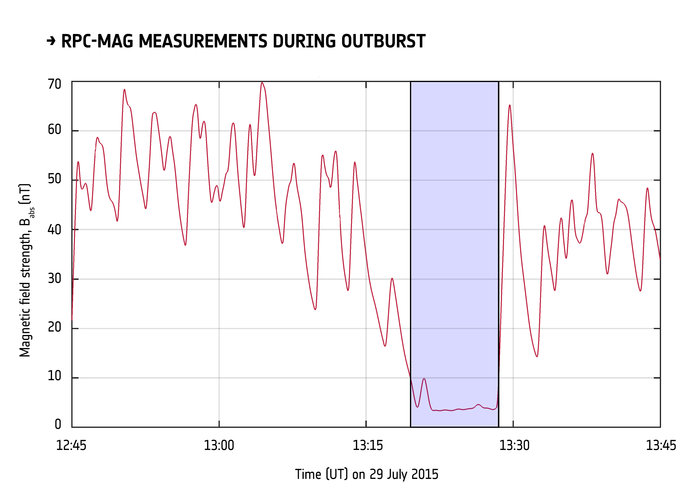Comet Churyumova-Gerasimenko marked the passage of perihelion with a salute

When you click, the image will open in its original size.
The moment of approaching the Sun to a minimum distance, the passage of the perihelion, comet Churyumova-Gerasimenko noted with a peculiar salute: a gas and dust emission from its core. The ejection was discovered by Rosetta, which sent photos of the comet's activity to Earth. The perihelion of the comet passed on Thursday, now the celestial body gradually begins to move away from the Sun to make a new revolution around the star (the period of revolution of the comet is 6.5 years).
Earlier, Comet Churyumov-Gerasimenko showed rather high activity when approaching the Sun. Activity was manifested in the form of a large number of gas-dust emissions. All this was recorded by Rosetta, and scientists have been receiving unique data for months. Some data were also transmitted by the Philae probe, which, despite the not very successful landing, nevertheless practically fulfilled its scientific mission.
It is worth noting that the comet will be active for a long time, and emissions similar to those already recorded can occur repeatedly.
On July 29, Rosetta observed the most significant outburst recorded by several scientific instruments of the station at a distance of 186 km from the comet. The ejection was also photographed, and these images hit the Earth. Rosetta instruments also recorded some changes in the structure and composition of the gaseous coma around the comet's nucleus, and the apparatus also reported a significant increase in the concentration of dust around the comet.

The ejection even affected the solar wind and its magnetic field.
The OSIRIS instrument was able to obtain images of the ejection, which appeared near the comet's “neck”, in the Anuket region. It can be seen in the image received at 13:24 GMT, in another image taken 18 minutes before, there is no ejection yet. The ejection flow rate is estimated to be at least 10 m / s, most likely the speed was even higher.
“It was the brightest outburst ever recorded,” said Garsten Gutter, a member of the OSIRIS team at the Max Planck Institute.
